If you're new here, you may want to subscribe to my RSS feed. Thanks for visiting!
This week’s Self Reliance Weekly Report is all about getting ready for spring.
It’s here: that time of year when it’s still winter, but the anticipation of spring is in the air. (And possibly on the table in the form of seed and nursery catalogs!) One of my favorite parts of self-reliance is the planning and the dreaming. Right now, I’m figuring out my garden and my livestock for the year.
The Self-Reliance Weekly Report is a collection of strategies, made up of the articles, books, DIYs, and products that I found useful on my own little prepper’s homestead.
Prepping
Do you have a plan to grow food after disaster strikes? First of all, you have to be sure that you’re stocked up on seeds, but that is only the tip of the iceberg lettuce. There’s a lot more to a survival homestead than a seed vault stashed away in your closet. Scott Terry, who has been farming for most of his life, sheds some light on the top myths of post-apocalyptic farming. For the love of all things cute and fluffy, if you plan to survive on what you raise, you need to start now. Here is a timeline for how long it takes to get your homestead to produce food. And never forget that in any given year, your garden can be a total flop. Mine was a complete disaster this year – it was so bad that it was actually funny but if we were relying on that food, we would have starved. It’s essential to know what you’ll eat if your survival garden fails, as well as how to troubleshoot the garden to try and salvage what you can.
If you are on a tight budget, please don’t despair. You can still prep. There are many items that you can get very inexpensively to help build up your one year supply. In fact, here’s a list of 100 very budget friendly prepper purchases.
You’ll need more than just veggies to survive. Have you considered how you will provide dairy and meat for your family if it hits the fan for the long term? Consider meat rabbits, which can be raised even in a suburban backyard. Here’s a comprehensive guide to raising them for the dinner table. (And be sure to grow some rabbit friendly herbs for them.) As far as dairy is concerned, goats can be an easier, more affordable option than cows. Here are 5 great reasons to consider them for your own homestead.
It never fails to blow my mind how people get caught unprepared for blizzards again and again. We’ve had some doozie snowstorms this year, and after the shelves were emptied on the first one, you would think that people would finally say, “Hey, I should put a few things aside.” One blogger is hopeful that this year’s Snowmageddon was the push they needed to finally get prepared, and maybe some folks did learn their lessons. However, the second series of blizzards just hit, and yet again, the shelves were emptied in a panic last week. I seriously don’t understand. When you live in a climate prone to snow storms, how can you be taken unaware by a snow storm? Regardless, here’s a list with the bare minimum supplies that you need to ride out a storm if you happen to be new to preparedness. Let’s do our part to help people get prepped. Pass this on to friends in chilly climates so that they can be ready next time around. 🙂
Homesteading
Want a one-year food supply? Grow it! This is my garden guideline for a year of food. The author recommends outlines what you need to provide about 300 days of food for a family of 4. Of course, I’ll be adapting it to include more of the things we love and less (or none) of the things we hate. Like beets. I really hate beets.
Are you new to gardening? This garden 101 will get you started. It’s the perfect guide for the beginning gardener. And if you like instant gratification, try these 13 plants. They’re quick and easy to grow. Also,
When is it actually planting time? If you take some steps to warm your soil, you’ll give your seeds and seedlings the best chances of thriving. Also, be sure to check this guide to last frost dates so you can plan your planting time after the risk of a freeze.
Do you live in an HOA or a neighborhood that frowns on tomatoes in the front yard? If so, and you still yearn to homestead, you may need to be stealthy to make use of your entire property for growing food. Learn how to hide food-bearing plantings in plain view, while turning your yard into an edible Eden.
Seed catalogs, AKA gardener’s nirvana. If you’re anything like me, right now your coffee table is covered with dog-eared, highlighted, marked up seed catalogs. Here is a link to 22 glorious catalogs you should be looking through right now. (There were some new finds for me!) And if you find all the different types of seeds a bit confusing, this guide will explain the differences and help you make the best decision.
Are you raising chicks this year? Here’s the best time to start them. If you plan to pasture raise them, you’ll want to check out these tips, too.
DIY
- Make your own soil mix
- Make new candles from old little stubby candles
- How to build a rain barrel
- How to test your seeds for germination rates
- How to make homemade cough drops
- How to make hand milled soap (and use up those little bits and pieces)
Books and Products
The following are products that I personally use and have recommended in the article above. (These are affiliate links, and purchasing through them costs you nothing extra but provides a small commission.)
While some aren’t fans of seed banks, I like them. I think the key is to buy one to use now, and one for later. That way, you can learn the quirks of your particular supply before it’s essential that you have good luck with it. Ignore the claims of “grow 10 billion pounds of food with this tiny vault” though. There are way too many variables to be able to determine how much food you’ll get out of the seed bank, like weather, soil conditions, acts of nature, and your own gardening skills. At the time of posting, you can pick up ALL FOUR of these seed vaults for less than $50. This is a small prep that could one day be invaluable to your family.
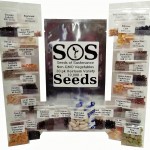




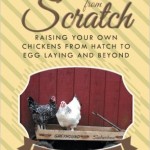
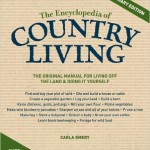
Self Reliance Weekly Farm Blog
As our impending move approaches, we’re going through our supplies and inventorying. I think it’s essential to do a yearly inventory, so I’m killing two birds with one stone: the packing bird and the counting bird. So far, I’ve been pleasantly surprised at what we’ve managed to amass. Our Once-a-Month Shopping has helped immensely in growing our supplies, but it’s not always easy to stick to, especially when you have other things going on. (At least I’m not alone. It looks like my friend Erica also had a few distractions with the challenge this month.)
Our new rooster, Bon Jovi, never settled in, and in fact, injured 3 of my birds quite severely. Bon Jovi had a near miss with my crock-pot but got a reprieve in a friend’s more mature flock, where he’s learned to behave himself. I really didn’t think my 3 birds were going to survive, but all 3 are now back in “gen pop” with the other hens. I got some great tips from the book Chickens from Scratch that helped me nurse them through their injuries. Since the two hens who were injured are just now reaching laying age, it would have been a pretty substantial loss. Orwell, my Silkie rooster, suffered the worst injuries, but he’s back in fine fettle with the bad-to-the-bone new attitude of a survivor. We’ve considered renaming him El Pollo Loco (the crazy chicken) due to his shift in personality. You can just barely see the bald spot on the back of his head in this photo.
My ducks went over to a friend’s to be butchered and will soon be residing in my freezer. (I don’t feel comfortable butchering them here, due to our septic issues.) Finally, after 8 months, we’re getting eggs and meat from our homestead. Hopefully, the move won’t cause too much upheaval and the progress will continue. Here’s one more picture from the coop.
I’m going to wait to start seeds until I move. I don’t want to have a repeat of last year. I should still be able to get things into the ground by April 1.
I am going to need a new chicken facility when I move, and I’d like to hear from you guys. Let me know in the comments what you would do with the two things I have free access to: a smallish metal shed (the type you’d put a lawnmower and assorted rakes in) and a large chain link dog kennel (12 feet long with 7 foot tall sides). The kennel is large enough to house the shed and still have plenty of run space. I have some ideas already but since we’ll be living on the edge of the woods, I need to make this Fort Knox to protect the birds from predators. I plan to have the chicken fort inside the fenced in area where my guard dog will be patrolling, which provides an extra layer of protection for them.
Aside from that, I have other questions for you guys, as always. 🙂 What’s going on at your farm or urban homestead right now? How’s the weather in your area? What’s your favorite seed catalog? Please share your updates in the comments below!

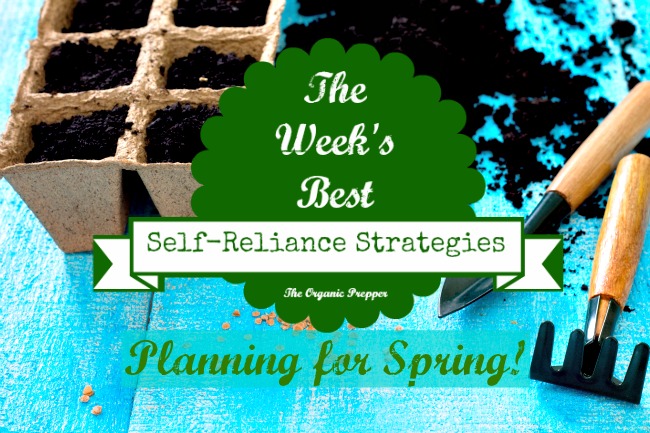
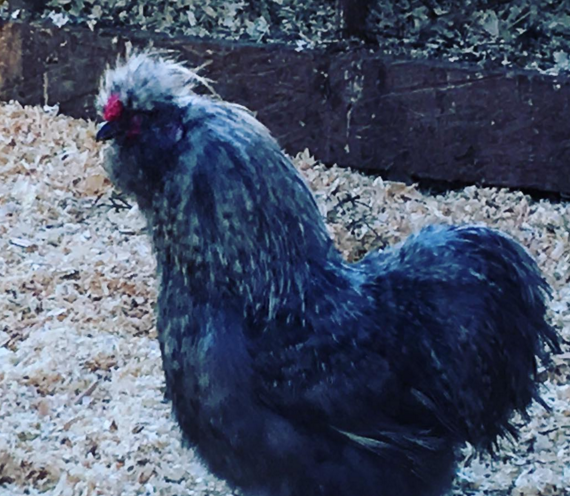
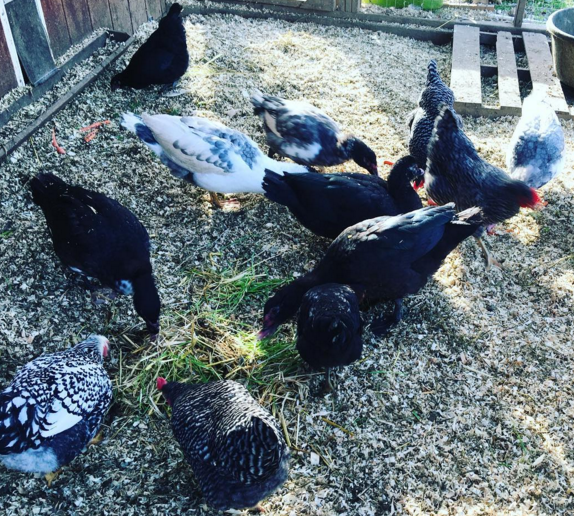














5 Responses
I really like your format and of course how could I not like this “issue”. thanks so much for all the shout outs and promotion help. I sure hope you don’t have any more chicken problems. – Janet
Moving? Again?
I would stick the garden shed outside the chain link, make a chicken door, use the chain link as a run off the shed(coop)
I finally killed off 10 of my roosters, now i have 22 hens (i think, cant get em to sit still long enough to count) and 2 roosters, one of the roosters is a bit of a bully though, so am thinking i may end up with one rooster,,, if i were the other rooster id dig them odds,,,
Going to put roosts and nesting boxes on coop today since the hens are getting close to laying, dont really want to be hunting for eggs,,,
Lots of good stuff in your post as usual, read it after reading the piece on Venesuela, we are already seeing government interference in our food system, the Food Safety Modernization Act, FSMA, the government thinks they can dictate what i do on my farm, and on millions of other small farms across the nation,, all i have to say is, Who is John Galt!
Ill be damned if i will pay to be audited and inspected and told how to grow stuff for market, so i am not going to be growing shit for market, they can find another source for the 45,000 # of kale i generally produce and sell. I just dont care.
On the brighter side, i think its good for me to scale down my growing, and redirect.
When the FSMA comes into full effect theres going to be a lot of sorry farmers, so many that dont even know they will be affected by this, and there will be no way around it.
Again, Who is John Galt!
I am a vegan and have been for several years. Protein can be found in all whole foods without having to rely on animal products. Also, I became vegan to avoid the need for medication for various ailments I was being diagnosed with. In a survival situation where will you get meds needed to survive?
Good for you, Linda Goudelock. I hope it works out for you. Personally, I think vegans are kind of nuts and lacking in needed substances found only in meats, but, whatever works for you and doesn’t violate the Non-Aggression Principle, works for me.
As to the question, “In a survival situation where will you get meds needed to survive?” … Hopefully, there’s a black market able to help people. Or, even better, people find a way to survive without the need for,’meds’.
RE: FSMA
I’ve heard a number of farmers here in the Midwest express a similar sentiment. …Things are getting crazy.
It’s difficult to stick to the motto, ‘Tend Your Own Garden’.